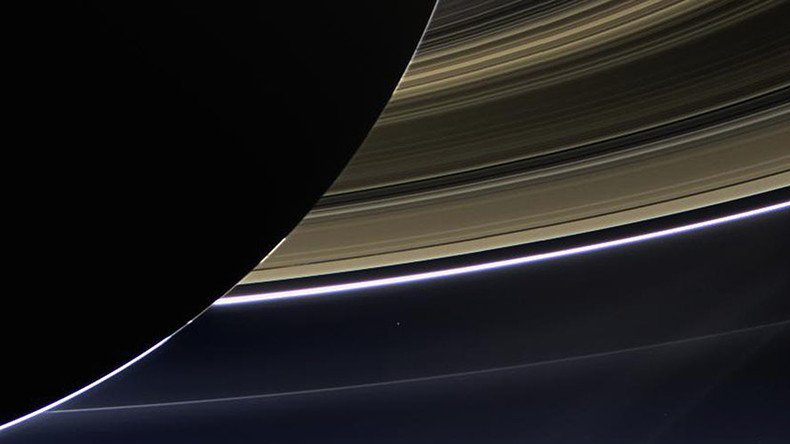NASA’s Cassini captures creepy noise between Saturn’s rings (AUDIO)

There’s sound in the stars – but not as much as scientists had hoped. NASA’s Cassini spacecraft beamed back an eerily empty recording of the space between Saturn’s rings. Less ‘Star Trek’, more dial-up modem, the area appears to be surprisingly dust-free.
"It was a bit disorienting – we weren't hearing what we expected to hear," said William Kurth, team lead with Cassini's Radio and Plasma Wave Science (RPWS) instrument. "I've listened to our data from the first dive several times and I can probably count on my hands the number of dust particle impacts I hear."
The recording, which was made on April 26, consists of mainly static with some erratic pings, signalling to NASA's Jet Propulsion Laboratory that the area between Saturn’s rings consists of much less space dust than previously believed. If there are aliens living between the rings they love to dust.
NASA said the particles they did encounter were no larger than those in smoke, roughly one micron across, or 1,000th of a millimeter. In contrast, Cassini detected hundreds of particles per second when it crossed the plane of Saturn’s rings.
The sounds produced by RPWS, which detects radio and plasma waves and then converts them to sounds, differs to what would be heard with a human ear, which would be unable to pick up on any noises in the vacuum of space, if you're unlucky enough to end up floating around there.
More data is expected back from Cassini in the coming days as it approaches the end of its mission. On September 15 the craft is scheduled to plunge into Saturn, beaming back as much as possible until its eventual demise as it burns up.
Launched in 1997, Cassini has provided never-seen-before images of Saturn’s atmosphere and nearby moons, including the heat of an ocean beneath the surface of the moon Enceladus and Saturn’s hexagon-shaped jet stream.
NASA Cassini spacecraft snaps ‘intriguing’ Saturn jet stream https://t.co/QLKN85poLIpic.twitter.com/u5hjFTFMwY
— RT (@RT_com) December 7, 2016












